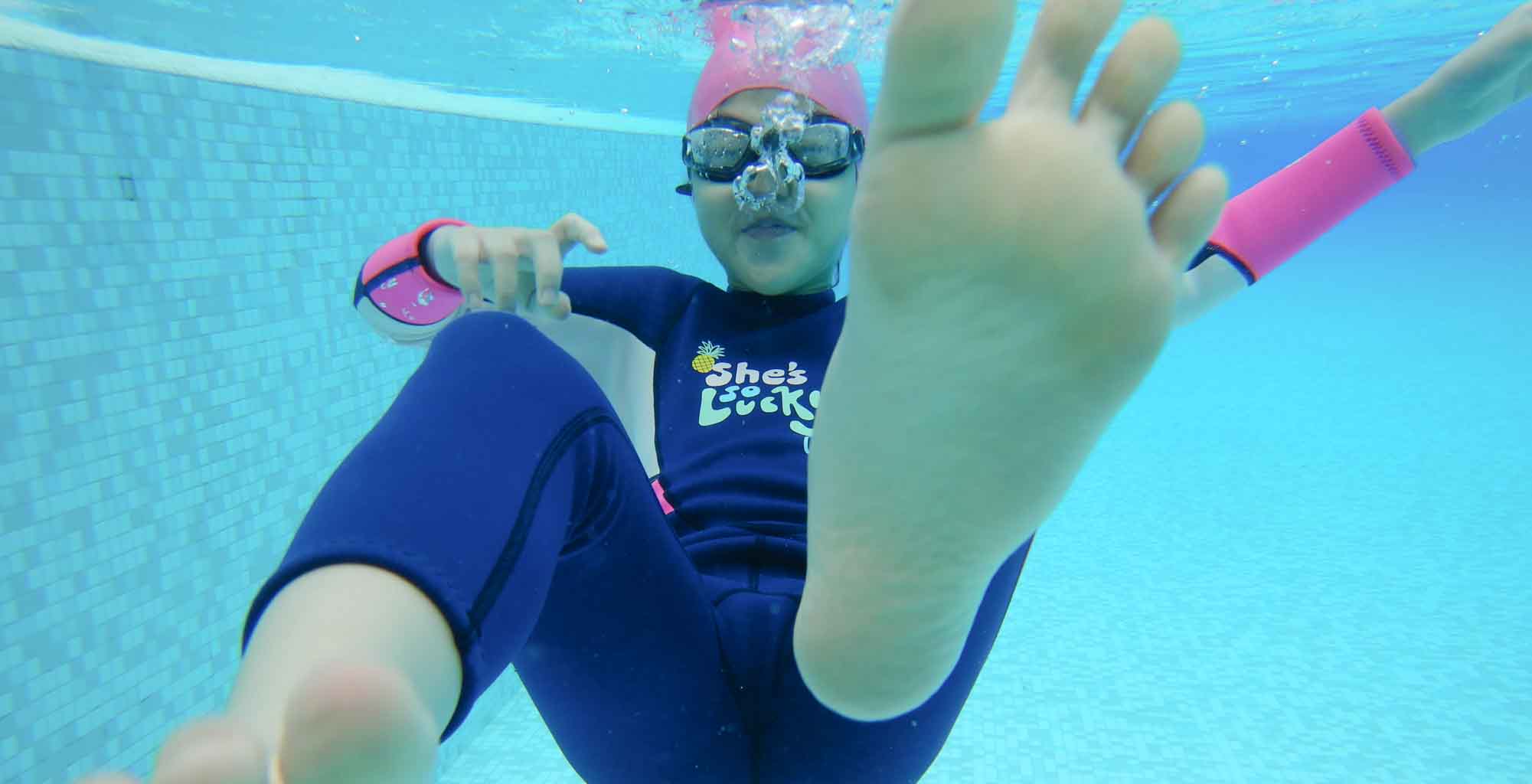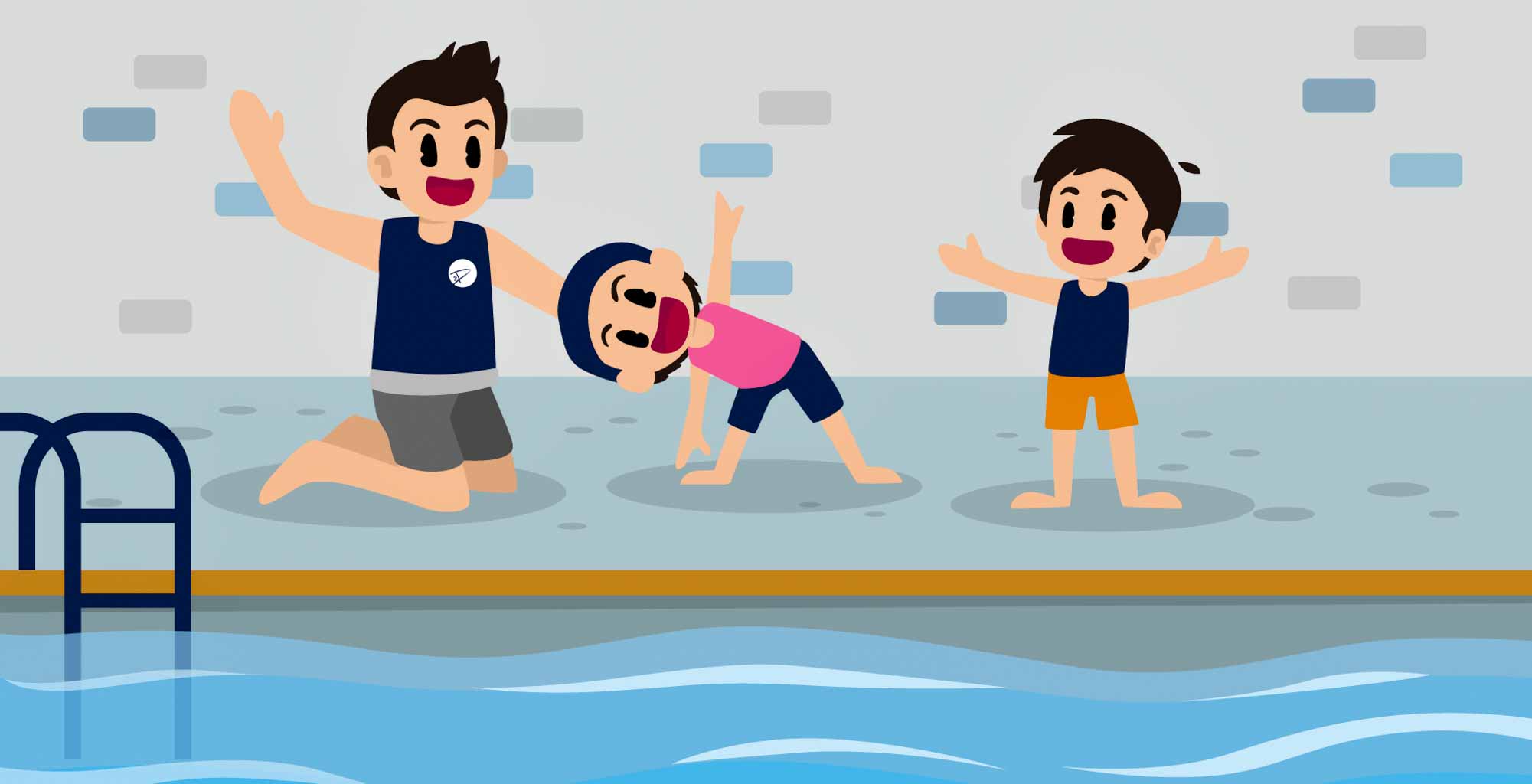Dry Land Training
Dryland training is more responsible for the advances in swimming over the last twenty years than anything else. I do as much training out of the pool as in the pool. – Gary Hall. Five times Olympic gold medalist and founder of the Race Club
Without some work done outside of the pool or what swimmers refer to as “dry-land training,” no training program is complete. Coaches advise swimmers of all skill levels to work out on dry land to build strength and flexibility. Every successful collegiate swimming program benefits from offering its swimmers a range of outside-the-pool exercises, like Pilates, yoga, plyometrics, and cycling. Triathletes have long recognized the advantages of varying their training regimens because they must balance swimming with land-based sports. Master swimmers will improve their muscle endurance and stroke efficiency if they dedicate a little time to dry-land work each week.
And how flexible are you?
To determine your level of flexibility for efficient swimming, take these three quick tests.
- Lie down with your heels up against a wall. Lift your arms until they are parallel to the floor by raising them from your sides. With the back of the arms pressed against the wall and your forearms pointing forward, flex your elbows to a 90-degree angle. From here, slowly raise your arms above your head while keeping your triceps in contact with the wall. Being flexible enough to elevate your elbows over your shoulders is ideal for excellent butterfly and freestyle techniques.
- Assume a prone position. Lift your arms above your head and place one hand over the other, locking your elbows and putting your palms up. Maintaining your arms flat on the floor, squeeze your shoulders up to your ears and maintain that position. The most effective technique to slice through the water with the least amount of resistance is in this streamlined position.
- Bend down, sit on your ankles, and press your shins, feet, and tips of your toes into the earth. With a straight back, sit up. In order to perform efficient butterfly, backstroke, and freestyle kicks, you have restricted ankle flexibility if this position is uncomfortable or difficult for you.
Dry-Land Training Goals
People become less active as they age and don’t use their muscles to the same extent as they did when they were younger, contributing to a decline in flexibility. Very few master swimmers had to raise their shoulders to their ears or extend their arms and hands above their heads for 45 minutes before beginning a swim program.
While increasing strength and flexibility are the two main objectives of a dry-land training program, two more frequently disregarded advantages are variety and injury avoidance. Your weekly training schedule will become more exciting and varied if you join a group fitness class, go to the gym, or cross-train in another activity. You can become more fit and injury-resistant by expanding your range of motion and using your muscles in new ways.
Stretching
A safe and comprehensive stretching regimen is the most important component of any dry-land program because it is the key to improving swimming flexibility. Age-related changes in connective tissue contribute to a decrease in flexibility, although decreased activity is the main cause. Moreover, using a computer or working at a desk speeds up this normal process. Maintaining and improving your flexibility through regular stretching will help you achieve better results in both your swimming and sports pursuits.
Although there are many different kinds of stretches, only a few important static and dynamic stretches are covered in this blog post. Start your workout with dynamic stretches to warm up, and end it with static stretches to cool down.
Before your workout, perform the next three dynamic stretches on the pool deck. These stretches should be performed slowly, with lengthy, within-range motions. These exercises are designed to increase muscle pliability and reduce tension.
- Arm Circles. Maintaining proper posture, raise your right arm to the sky. Next, carefully rotate your arm backward while feeling the stretch in your upper back and shoulder. Maintain a straight arm and a soft, relaxed elbow. Stabilize your right shoulder during the movement by placing your left hand’s fingers on the front of it. Pay attention to the backward motion compared to this joint’s usual forward motion during everyday tasks. Per arm, circle five to eight times.
- Walking Lunges. Step forward with your right foot while bending your right knee to a 90-degree angle and lowering your left knee to the floor. You should be standing. Get back up on your feet and extend your left foot and right knee toward the floor while moving continuously. Perform 5-8 lunges per leg, or 10–16 total. Place your hands behind your head or on your hips for added difficulty. During this hip flexor stretch, maintain your attention on good upper-body posture.
- Side lunges. While standing with your feet wide apart, lunge to either side alternately. Keep your left leg straight and drop your torso over your bowed right leg as you lunge to the right. For a more thorough stretch, raise your toes. Repeat each side five to eight times to extend the hips and adductors.
Cool Toys For Dry-Land Training
When exercising on dry land in a gym, athletes can choose from various equipment, including hand weights, complete weight machines, and balls in all sizes and weights. Plenty of solutions are available if you want to train at home without setting up a tiny gym. All it takes to accomplish a full-body workout is essential training items like those listed here. As with any exercise program, start small and work your way up while maintaining proper form.
Stability ball. Numerous more names exist for this incredibly adaptable equipment, such as workout ball, Swiss ball, and balance ball. To maintain balance during any activity, these large, circular toys recruit a variety of the body’s core muscles. For instance, you will employ your back muscles, hamstrings, hip flexors, and middle and lateral abdominal muscles to stabilize your body on the ball during a classic abdominal crunch. You may easily add variation to your dry-land training using the numerous stability ball exercises shown in books, movies, and websites.
Resistance bands. Bands come in different thicknesses; use them to give resistance throughout any part of your exercise routine. Exercises like internal and external rotation and rowing from the basic strength training program are a few examples of band exercises that may be found in the next portion of this blog post. To work greater muscles, choose thicker bands that will offer more resistance. Save the narrow bands for the shoulder’s smaller muscles.
Medicine balls. All weights and sizes of medicine balls are available to challenge and vary your workouts. Throwing a medicine ball with a partner to the floor or in the air works your core and upper extremities while keeping your balance. Select a lighter ball for more forceful motions that accelerate the muscle contract rate, resulting in increased power. Look through books, videos, and the Internet for medicine ball training ideas.
Foam roller. Even though runners have always preferred these, foam rollers are becoming increasingly popular among swimmers. By rolling over uncomfortable spots, these rigid foam cylinders apply your body weight, which helps release tense muscles. Rolling your latissimus dorsi and upper back muscles will help. Stretching shortly before rolling will produce a more effective stretch, much like a deep muscle massage.
Strength Training
You should incorporate a strengthening program into your training, whether your main objective is to increase your fitness level or to achieve a particular competitive goal. Up until recently, swimmers only strengthened their shoulders, triceps, back, and specific leg muscles because they thought those were the essential swimming muscles.
But now trainers understand that strengthening the stabilizing and reciprocating muscles in a full-body regimen gives swimmers the best results—faster swimming, fewer injuries, and better muscular balance.
In a strengthening program, one of the main areas that swimmers concentrate on is their midsection or core.
Strong core muscles help swimmers maintain their form and stroke technique over longer distances and at quicker speeds. According to coach Jim, the stronger your core muscles are, the faster you will swim.
Most swimmers associate strength training with a conventional gym environment filled with weightlifting machines.
But there are other possibilities for your strength training regimen besides weight training. You may focus on a fundamental strength-training regimen. A simple strength training regimen can be completed practically anywhere, such as at home, in a hotel room while traveling, or on a pool deck with friends.
With a bit of imagination, balls, bands, and your body weight, you can work out all the main muscle groups without ever setting foot in a gym. Health clubs and YMCAs usually offer group exercise sessions that emphasize developing full-body strength using bands, hand weights, and other comparable equipment. You can still benefit from a strengthening program even if you lack the time or inclination to work out for long periods.
Pilates is another well-liked and coach-approved option for swimmers. Joseph Pilates created this strength training regimen in the 1920s. All levels of athletes have come around to this training regimen. Pilates strongly emphasizes stabilizing and strengthening the muscles of the lower back, hips, buttocks, and abdomen—what Joseph Pilates referred to as the body’s powerhouse.
Pilates is a mind-body exercise regimen emphasizing quality over quantity, slow, controlled movements, and rhythmic breathing, much like yoga. For the best use of your time when you’re short on time, opt for one or two pilates sessions per week to enhance your flexibility and strength. Your ability to balance, strengthen, and stretch your core muscles will help you become more proficient in the water.
If you decide to use weights for strength training, read some of the great books that explain the various aspects of weight training and provide examples of appropriate forms, as well as speak with a personal trainer or strength training coach. Knowing when and how to incorporate the multiple objectives of weight training—such as increased muscle strength, power, and endurance—into your routine is crucial. You may create a program that fits your unique demands and enhances your swimming with the correct tools.
To assist you in getting the best results and lower your chance of injury, your strengthening program should adhere to a few critical principles, whether you are working out in a gym or on the deck. Always start your workouts with a 10- to 15-minute warm-up.
This may be anything from a quick jog to using an elliptical trainer or any other cardio machine that gets your heart rate into the aerobic zone (60–70% of maximum heart rate). Start the workout with the biggest muscle group (your abs) and work down to the smaller, more specialized ones (your arms) after the warm-up. Last but not least, planning ten minutes to unwind and stretch your muscles at the end of your workout can help you feel less sore the next day.



